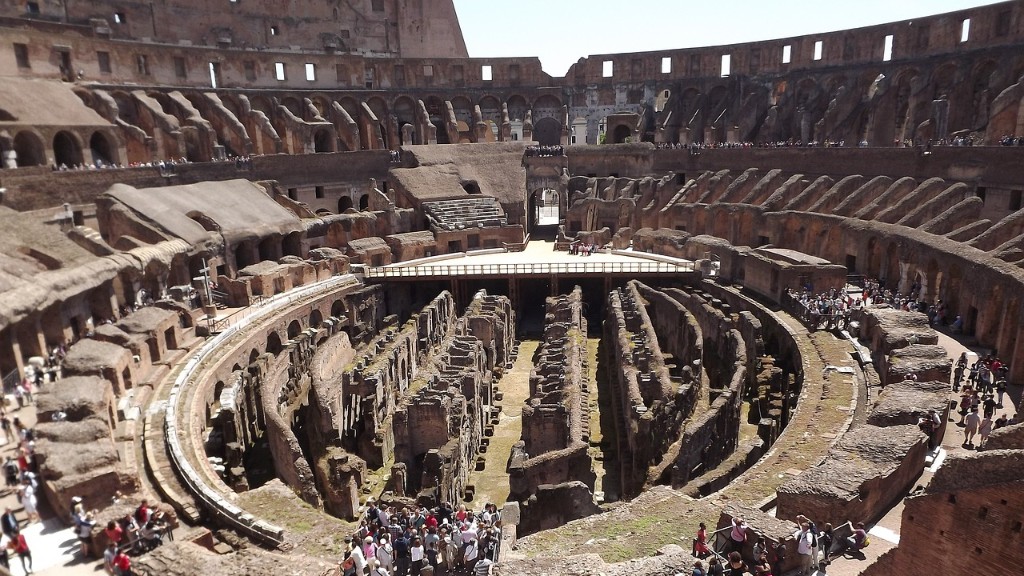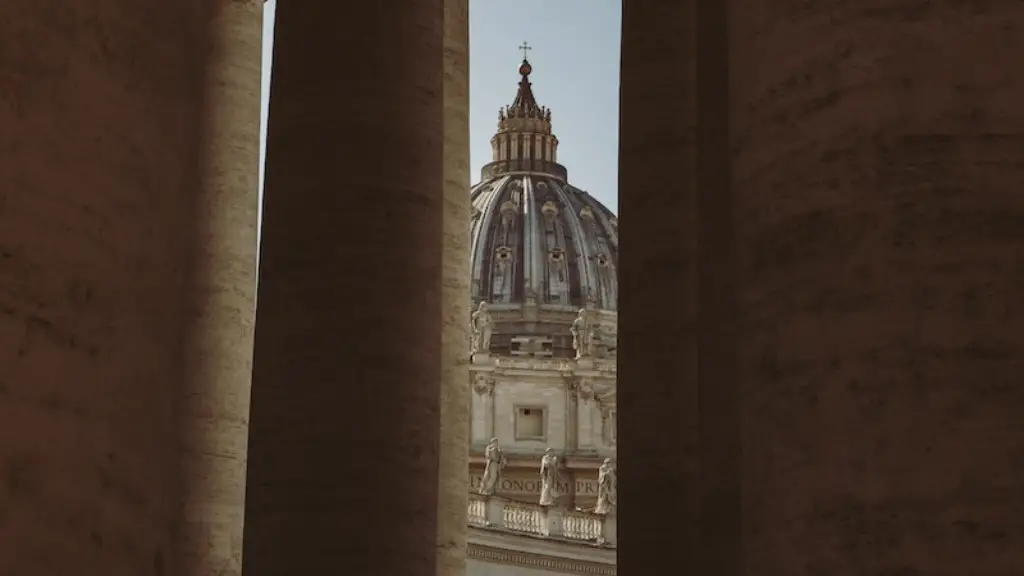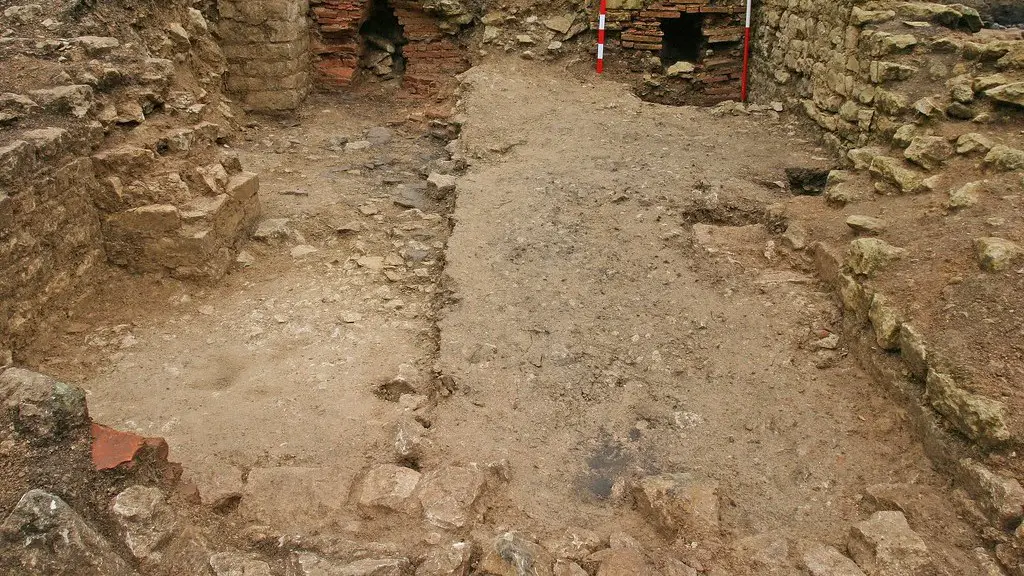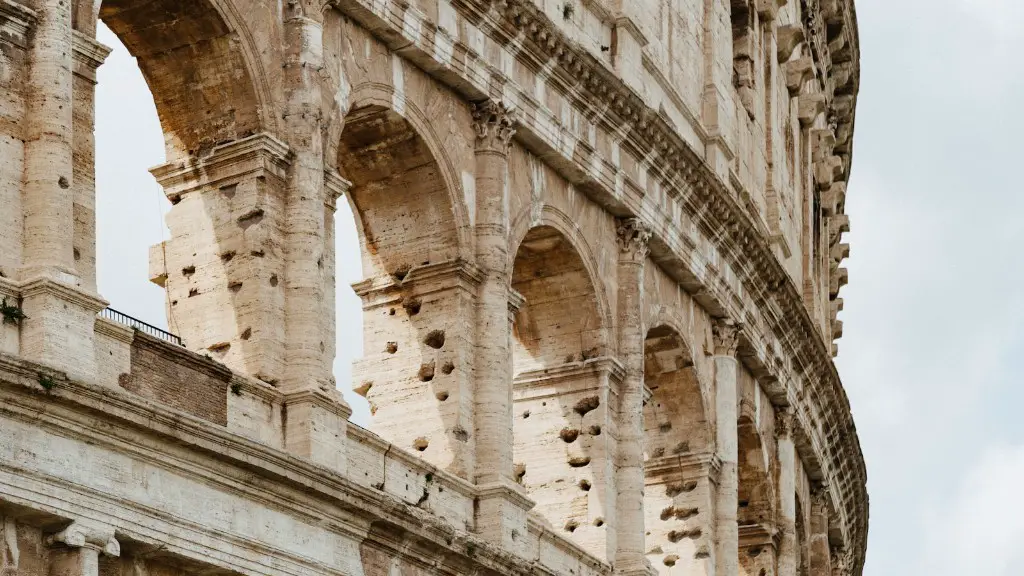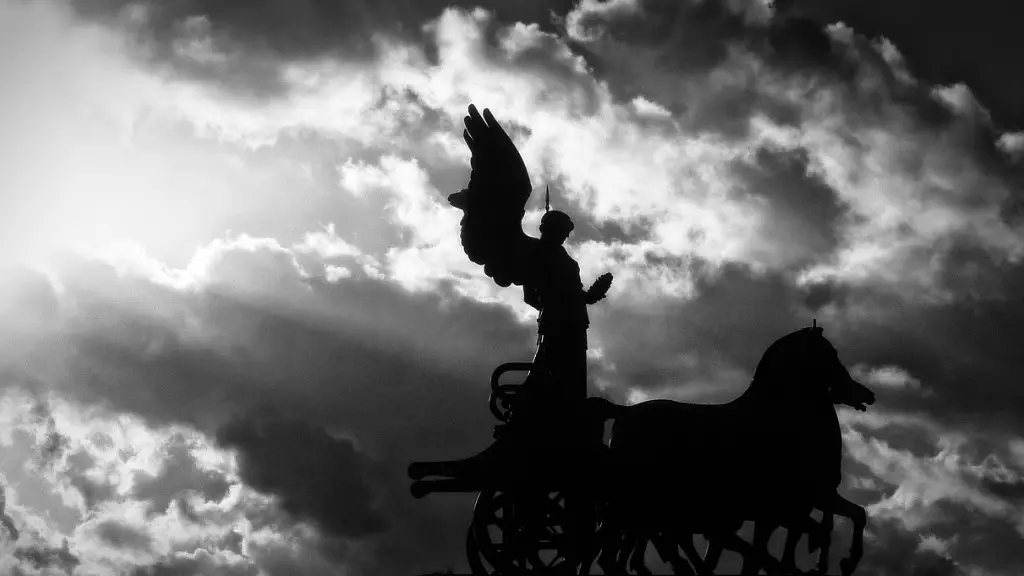Art from ancient Roman times has long been held as one of the classical pillars of Western art. Some of the greatest sculptures, frescos, mosaics and reliefs of ancient Rome are still admired as symbols of beauty and creativity today. Ancient Roman art reflected the imperial grandeur of Rome at the time, as well as its religious and cultural beliefs. From its humble beginnings in the form of pottery, to its triumphant conclusion in the splendour of the Empire, art in Roman times underwent dramatic changes.
The form of art at the dawn of Rome included mostly decorative and functional objects such as vases and pottery. With the rise of the Republic, art began to take on a more symbolic and religious purpose. Roman gods and goddesses were often featured, along with gods and goddesses from other cultures as Roman civilization expanded. Sculptures of Roman emperors, generals and statesmen were also common. These works of art were typically done in bronze, or sometimes marble, and created to honour important figures.
The use of portraiture was increasingly popular in Roman art. By the 2nd century BCE, it had become a recognisable and well-developed form. Photos of parents, children and spouses were often immortalised in busts and statues, conveying a sense of the individual’s power and importance. In contrast to Greek portraiture, which tended to be idealised, Roman portraiture was highly realistic and emotionally charged.
Ancient Rome also saw the flourishing of frescoes and mosaics, which often depicted scenes from mythology or observed everyday life. Frescoes, which were painted onto the walls of buildings, often used vibrant colours to portray grandiose narratives. While mosaics, created by laying out pieces of coloured glass and ceramic, featured crisp lines and could be used to illustrate more delicate scenes. Mosaics and frescoes reached their peak during the time of the emperor Augustus.
The rise of Christianity in the 4th century CE also had an effect on the art that was being produced. While the Roman Empire had previously been polytheistic, many of the artworks now featured Jesus or scenes from the Bible. While sculptures were still prominent, the rise of Christianity meant that painting and other forms of art began to be more popular. This would eventually lead to the development of early medieval art.
Ancient Roman art can still be seen in many of the art galleries and museums around the world. Many of the sculptures, frescoes, mosaics and portraits continue to capture people’s imagination and provide a glimpse into this fascinating period of history. Ancient Roman art was highly influential in the development of later art styles, and remains an important part of our cultural heritage.
Ceramic Vases
The earliest art from ancient Rome was largely in the form of pottery and ceramics. Potter’s wheels were used to make vases, amphoras and other vessels, which were then decorated with decorations such as foliage, geometric designs and mythological scenes. The pottery was often painted or glazed with bright colours and vibrant designs. Clay sculptures were also popular, and some of these were also decorated with striking patterns and vivid hues.
Ceramic vases that were used to store food and wine, and often featured on tables as decoration, were highly sought after among the Roman elite. They were made in a variety of shapes and sizes, with complex decorations showing everyday life or grand mythological scenes. Many of these artefacts have survived, and provide an insight into the craftsmanship of early Roman artists.
The introduction of mosaics on wall and floors was also part of ceramic art in Roman times. Mosaic makers used clay and marble to create extravagant and colourful works that still excite and awe today. Pieces like the famous Alexander mosaic in Pompeii demonstrate the skill and artistry of the Roman mosaic artist.
Sculptures
Sculptures were a significant form of Roman art. The most esteemed sculptors were often employed by the state, and were commissioned to produce pieces to commemorate important events, or glorify famous rulers. Sculptures of gods and goddesses were also popular, as the Roman people placed great emphasis on honouring the gods.
The bronze sculptures of the ancient Romans are renowned for their exquisite craftsmanship and intricate detail. Many of these pieces are now housed in museums, and still captivate viewers with their stunning beauty and lifelike features. One of the most renowned pieces is the Capitoline Wolf, which is a bronze sculpture of the mythical she-wolf suckling Romulus and Remus, the legendary founders of Rome.
The Capitoline Wolf is just one of the many sculptures that were produced during the height of Roman art. Other notable statues include the Apollo Belvedere, the Dying Gaul, and the Winter Solider, all of which demonstrate the strong sense of realism and beauty that was seen in much of the sculpture of Rome.
Reliefs and Paintings
Reliefs were also a popular and important element of art in ancient Rome. These sculptures, typically made out of stone, were raised images that were used to decorate walls, columns and ceilings. Scenes of mythology, battles and everyday life could be depicted in intricate detail, while lettering and symbols could be used to add an extra level of meaning.
Painting was a rare but significant art form in Roman times. Most of the paintings were on walls, and usually featured mythological scenes or representations of gods and goddesses. Although few of these paintings have survived, those that have remain some of the most distinctive art from ancient Rome.
One of the best-known paintings from Roman times is the Farnese Bull. This wall painting showcases a battle between the Romans and the Celts that took place in 225 BCE. The painting was heavily damaged during the fall of Rome, but has since been restored and is now housed in the National Archaeological Museum of Naples.
Mausoleums
The mausoleums of the ancient Roman world are some of the most instantly recognisable and awe-inspiring monuments from the period. These grand structures, which were used to house the ashes of the deceased, often featured extravagant sculptures, frescos and mosaics. The Roman mausoleum also showed clear influence from the funerary art of Egypt and Mesopotamia, with sphinxes, pyramids and other element typical of those cultures being common features.
The most famous mausoleum from Roman times is the Mausoleum of Augustus. This grand structure, which was commissioned on the orders of the Emperor Augustus, was home to grand frescoes, sculptures and inscriptions, depicting the life and achievements of the First Emperor of Rome. Although the mausoleum was destroyed in the 16th century, many of the sculptures, frescoes and other decorations remain, providing a fascinating insight into this incredible structure.
Conclusion
Ancient Roman art is renowned for its beauty and realism. Sculptures, mosaics, frescos, vases and reliefs have all been produced during this period, and continue to captivate audiences today. Through these art works, we gain an insight into the beliefs and values of Roman society, as well as the craftsmanship and artistry of ancient Roman artists.
